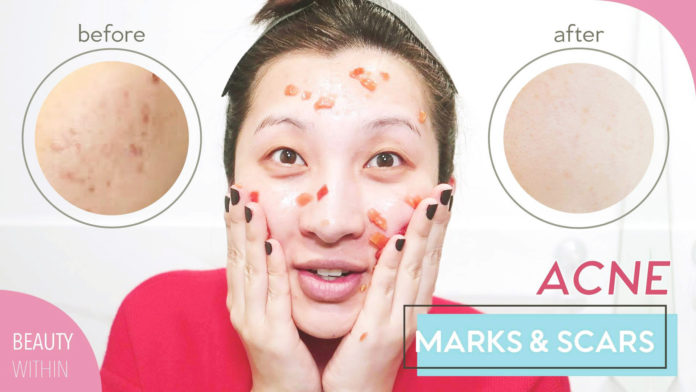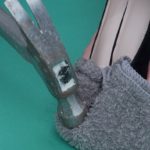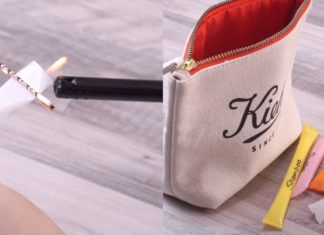I’m sure we’ve all gone through our fair share of breakouts, trying to resist the urge to pop that particularly juicy looking pimple. Only to realize you have no self-control and pop it anyway. Then internally sulking and realizing you’re left with the battle remnants: scars. Fear not, we will tell you everything you need to know about how to treat acne scars.
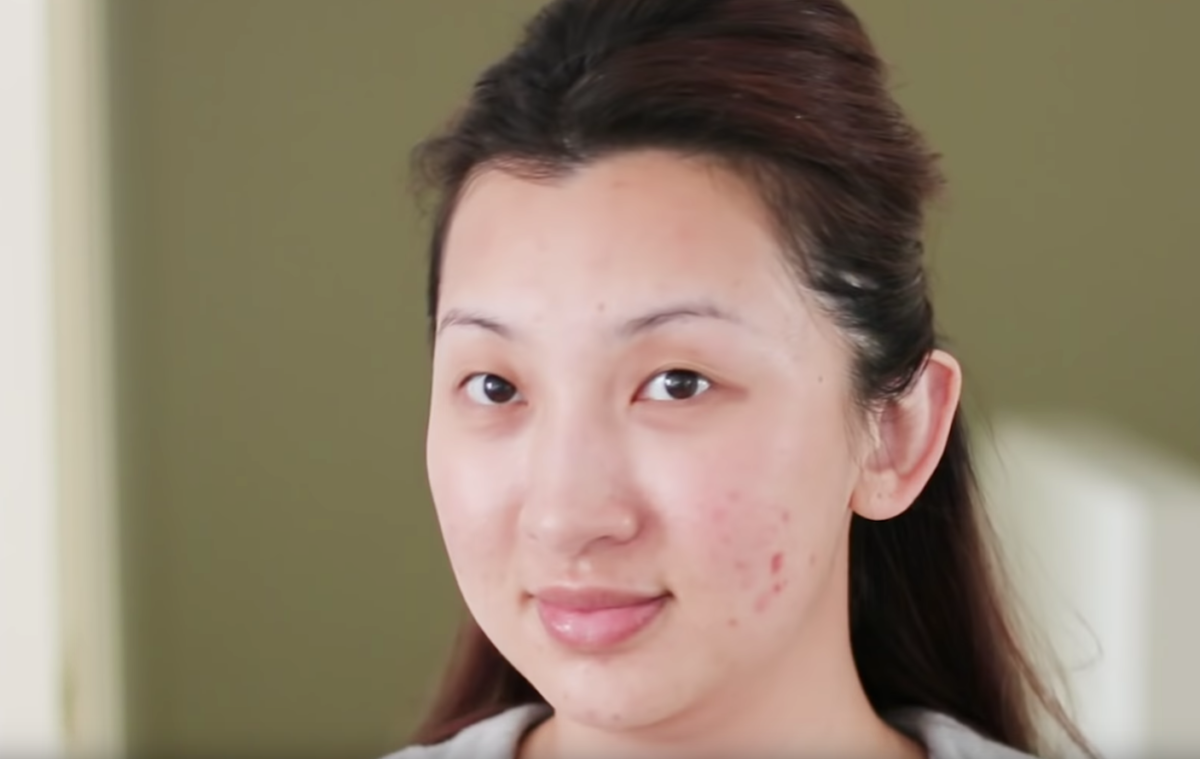
Depending on the pimple itself, your skin can result in different types of scars or red marks that do typically fade away on their own. So today, we are going to look into the common causes for acne scarring and acne marks, as well as hyperpigmentation, how to tell the difference between the two, and some products you can use to help treat them.
Types of Scarring
The term “acne scarring” is an umbrella term that refers to three different issues, including discoloration, hyperpigmentation, and pimple/acne marks. Within this umbrella term, there are more classifications within each category that branches out and needs different types of topical treatments to heal them.
Hyperpigmentation
There are two types of hyperpigmentation: Post Inflammatory Hyperpigmentation (PIH) and Post Inflammatory Erythema (PIE).
Post Inflammatory Hyperpigmentation [PIH]

PIH take in the form of brown or black spots on the skin that are caused by the overproduction of melanin, which is the pigment that gives color to our eyes, hair, and skin. PIH triggers melanin production which leads to flat and brown colored scars to the surface of your skin.
Treating PIH
Use products that speed up the skin renewal process so that the layers of the skin can regenerate faster, thus preventing the skin from discoloration.
We recommend using the following products and natural ingredients to treat PIH discoloration:
- AHAs or Alpha Hydroxy Acids are chemical exfoliants that help remove dead skin and increases cell turnover, which then speeds up the skin renewal process. AHAs include mandelic acid, glycolic acid, and lactic acid, which are ideal for people with dry skin types because it is gentle to use on the skin.
- Niacinamide is an antioxidant-rich ingredient that helps brighten your skin, reduce redness, and reduce hyperpigmentation by increasing collagen production and hydration.
- Retinoids are present in vitamin A, which fights hyperpigmentation, increases collagen production and cell turnover on your skin. This helps shed the outer layers of discoloration to reveal new skin underneath. So this speeds up the time the acne discoloration is present on your skin.
- Vitamin C helps block abnormal pigment production of melanin (which is the source of all discoloration appearing on the skin) to grow, brightens the skin as well as prevents darker spots on the skin to fade faster.
Natural Remedies
-
-
Aloe Vera + Tea Tree
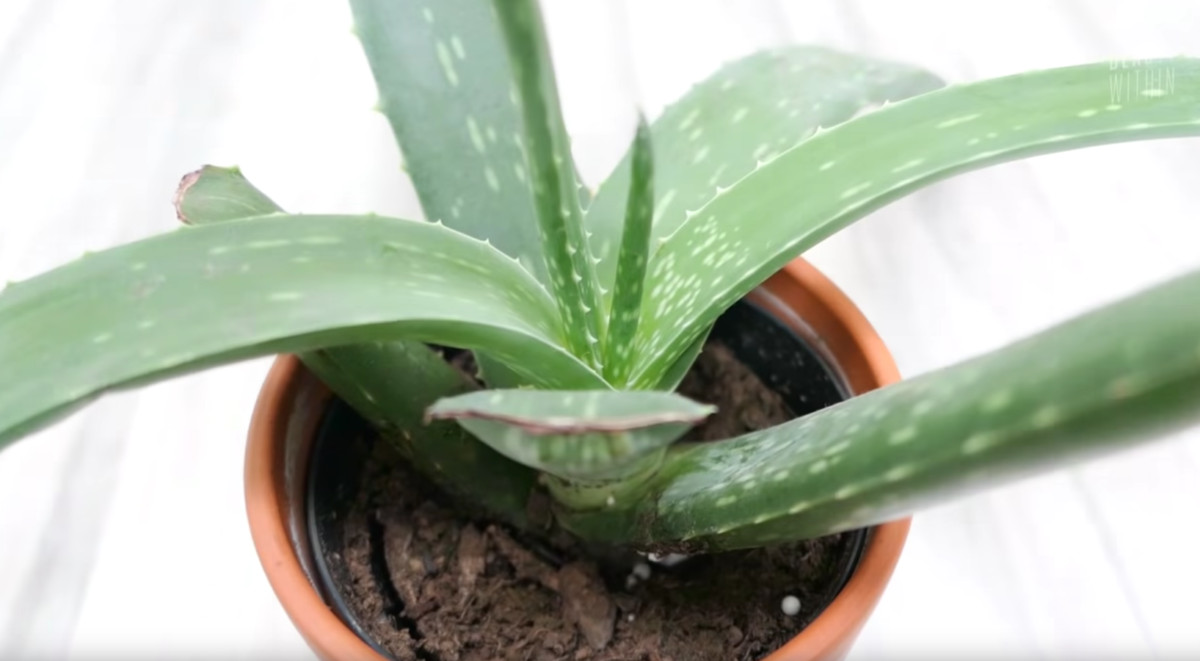 Aloe Vera is known for removing scars, calming skin, and reducing redness. It is also known as being a natural emollient. It contributes to repairing damaged skin, improves the elasticity of formed tissue and promotes the growth of healthy skin.
Aloe Vera is known for removing scars, calming skin, and reducing redness. It is also known as being a natural emollient. It contributes to repairing damaged skin, improves the elasticity of formed tissue and promotes the growth of healthy skin.
-
-
- Method
- To use the Aloe Vera, simply cut the aloe vera leaf and scoop out the gel. Apply the fresh gel onto your skin and massage in circular motions until absorbed into the skin.
- Method
-
Tea Tree Oil
Alternatively, you can add two-three drops of tea tree oil and apply it directly onto your skin once or twice daily. Tea tree oil is a popular essential oil that helps fight redness, has anti-inflammatory effects, and can be used as a spot treatment for active breakouts.
-
Tomatoes
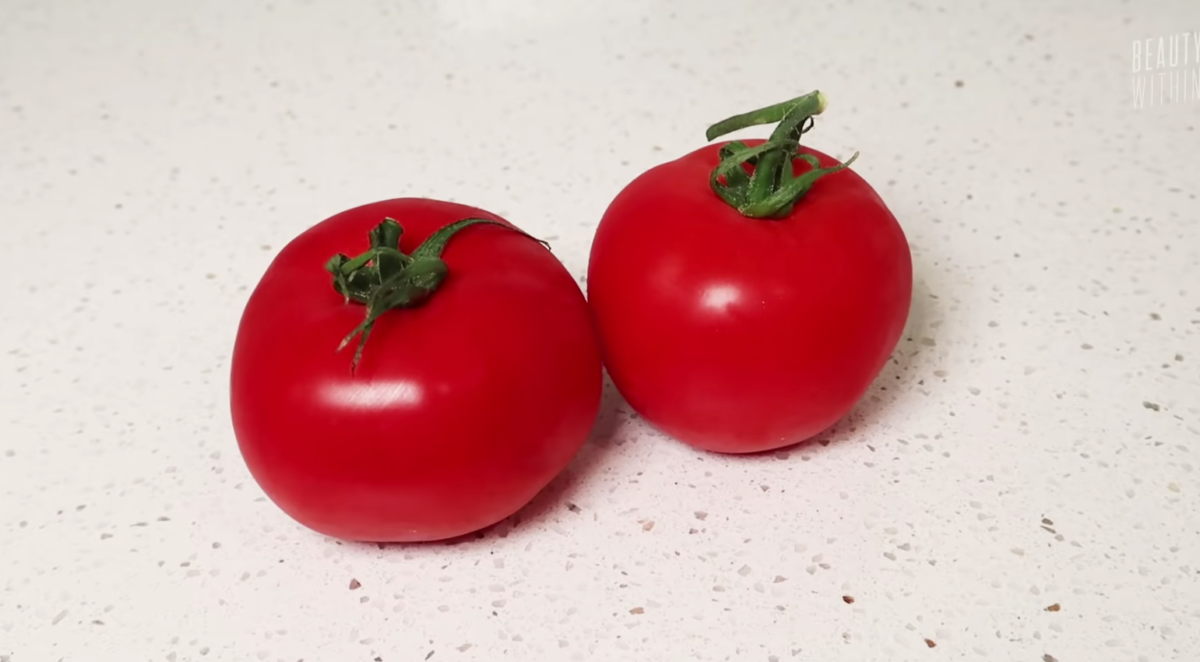 Tomatoes are full of vitamin A and carotenes, which helps heal damaged tissue and promotes the regrowth of cells. Tomatoes are also known to shrink pores, fight acne, remove tans, and brighten the complexion.
Tomatoes are full of vitamin A and carotenes, which helps heal damaged tissue and promotes the regrowth of cells. Tomatoes are also known to shrink pores, fight acne, remove tans, and brighten the complexion.- Method
- Take one red tomato and cut into pieces. Transfer the tomato pieces into a blender or food processor and blend until pulp consistency. Apply the pulp evenly onto your face and leave on for fifteen to twenty minutes. Wash your face afterward and apply your normal skincare.
- Method
Post Inflammatory Erythema [PIE]

Post Inflammatory Erythema (PIE) differs from PIH as it appears on the skin as red and purple colored spots that are left behind from acne. If you’ve suffered from bad cases of deep cystic acne, you may find that the marks left behind are red. This is due to the damage done to the capillaries near the surface of the skin.
Unfortunately, PIE is a little more difficult to treat because the damage was done on a deeper level to the skin. Hence why you will need to treat PIE with more abrasive treatments such as laser, microdermabrasion or micro-needling.
Atrophic Scarring

Atrophic scars caused by acne are also difficult to treat due to the broken skin tissue. For this type of scarring, your body is unable to produce enough collagen to repair the broken tissue, hence the deep dents on the surface of your skin. Additionally, there are three different types of atrophic scars: ice pick scars, rolling scars, and the box scars.
Ice pick scars are triangular-shaped dents, box scars are rectangular shaped, and rolling scars are bumpy. All of these scars are results of traumatic acne or skin conditions.
Treating Atrophic Scars
Atrophic scarring occurs when there is trauma on the skin, like cystic acne, and the body was not able to heal it fast enough. There is a lack of collagen to repair the damaged skin tissue so this leaves sunken, crater looking scars on the face. As this is broken tissue, it’s much harder to treat. The most effective way would be through micro-needling and laser treatments. Seek a professional to diagnose these skin concerns.
Prevention
Prevention is always better than cure. The best way to prevent scars from forming is to not pick at your pimples because picking at them the wrong way can cause added infection and scarring. The acne scarring can then take a longer time to heal.
Another type of prevention is to keep wounds protected. If you have pimples that suddenly burst, keep them protected by covering them up with a pimple patch. Pimple patches are hydrocolloid bandages, which helps to absorb any remaining pus within the pimples as well as provide a barrier to protect the skin from exposure to bacteria.
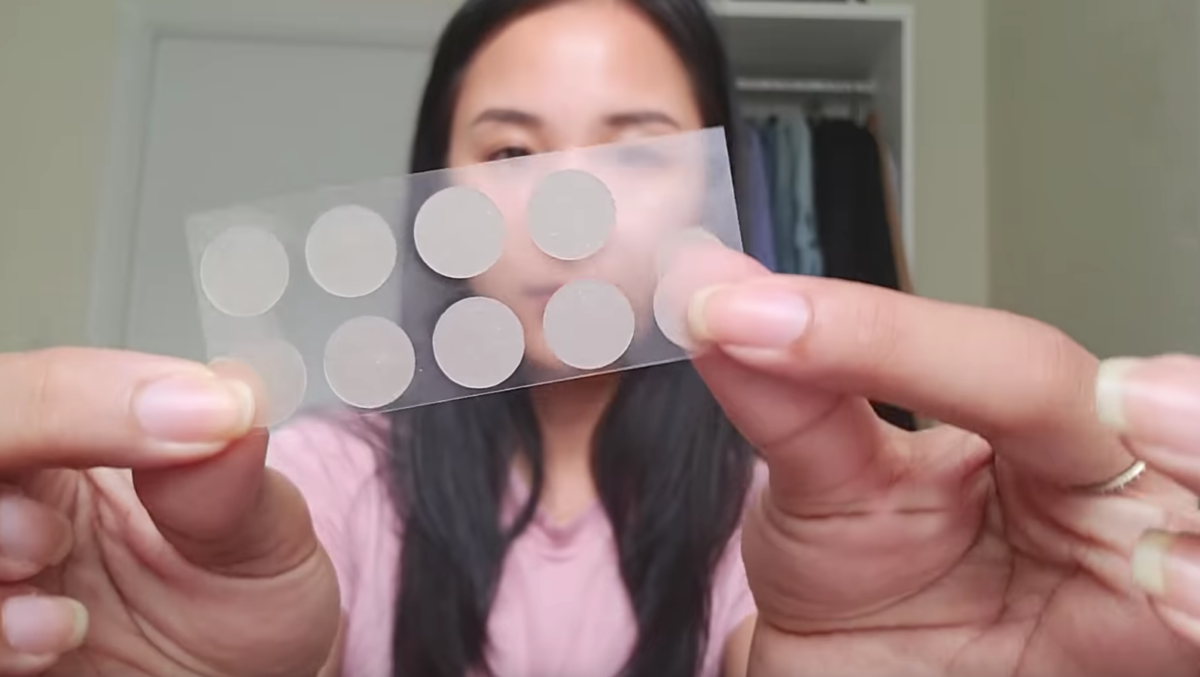
Lastly, use SPF to further protect your skin against the sun’s UV rays, which can further aggravate your acne, intensify any hyperpigmentation you already have on the skin or even produce more unnecessary sunspots on the face. This can all be avoided by just applying sunscreen every day as part of your morning skincare ritual.
Remember these are just our tips and advice from what we know and what we’ve experienced. At the end of the day, we all have acne-scarring or hyperpigmentation. It doesn’t make you different, not desired, or not attractive– it makes you, YOU!
For more tips and advice on hyperpigmentation and acne scars, check out our full video:
Remove Acne Marks, Hyperpigmentation & Scarring | Home Remedies + Natural Ingredients to Use


